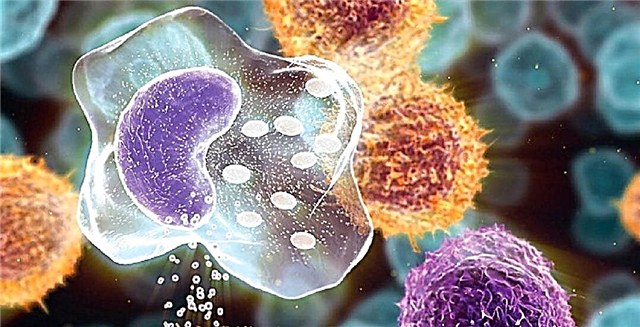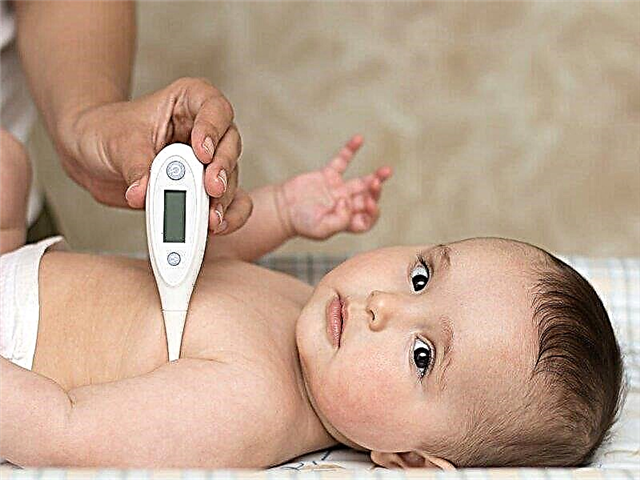Nature has awarded man with two sets of teeth - temporary and permanent. A moment comes when the deciduous, temporary teeth are replaced with stronger ones - molars. Although the process of changing teeth is physiological and usually does not bring discomfort to the baby, parents often worry about the health of the baby's oral cavity.
Many questions remain around the timing of loss and the need for temporary teeth treatment. It is believed that it is not worth filling milk teeth, because the baby will soon part with them anyway. To keep the baby healthy and provide the baby with a beautiful smile for many years, parents should figure out why temporary teeth are needed and how to deal with them.
A bit of anatomy

Although temporary teeth appear during infancy, starting at 6 months, their formation occurs before birth. After the appearance of the crumbs, changes also occur in the dentition, the rudiments of permanent teeth are formed.
The beauty and strength of molars directly depends on the health of their predecessors, milk. Temporary teeth are necessary to prepare the baby's jaw for future changes. Damaged by caries, unhealthy predecessors can lead to impaired development and formation of root replacements.
Temporary and permanent teeth are bone formations that are needed for mechanical processing of food, its crushing, and chewing. Outwardly, the teeth of a child and an adult are similar, but there are still anatomical differences.
The crown is the part of the tooth that rises above the gum. It has a different shape, depending on the place of the tooth in the row. In babies, the crown is smaller, although the teeth of a child and an adult are similar in shape. The root of the tooth is not visible, because it is located in the recess of the jaw. The root has a small hole through which the vessels feeding it pass.
There is a misconception that a milk tooth is not endowed with a root. In fact, the roots of deciduous teeth dissolve when it is time for a molar to erupt.
All teeth are covered with a special protective shell - enamel. Unlike molars, the enamel of temporary teeth is insufficiently mineralized, therefore it differs in its properties. Few of the guys can boast of strong teeth, the crumb's enamel is thinner and softer. Caries in a child spreads quickly and can turn into pulpitis, periodontitis, gum disease - gingivitis.
Why do milk teeth fall out?
Attentive mothers know that a child has only 20 temporary teeth, while an adult has 32 teeth. Several years after the appearance of all temporary teeth, their roots undergo changes, shorten and dissolve. The milky precursor, devoid of a root, becomes mobile and soon falls out, and a new, molar tooth appears in its place.
The renewal of teeth in children begins a little earlier than the loss of the first milk tooth. The eruption of the first permanent teeth occurs at the age of 5 - 6 years, when the jaw of an older child is ready for the appearance of the sixth bone formation - the molar.
When do baby teeth fall out in children?

Loss of milk teeth in children is a process that depends on various factors and causes. The timing of the change in the dentition is influenced by heredity, some diseases, the nature of the diet, but nevertheless, the order of loss of milk teeth remains approximately the same:
- The first to leave the oral cavity are the central incisors from above and below. From the age of five, changes occur in the teeth, the root begins to dissolve, and the tooth itself becomes unstable and falls out by the age of 7.
- Then it is the turn of the upper and lower lateral incisors to fall out, the roots of which are almost impossible to find by the age of eight. The kid loses one more tooth, making room for a permanent tooth.
- The next are the small upper and lower molars, which are about 8 to 9 years old.
- Resorption of the roots of the upper and lower canines begins about 8 years old and lasts 2 - 3 years, by the age of 10 - 11 years the child loses these teeth.
- The situation with large molars is more complicated, their roots begin to change at the age of seven, but the teeth are the last to fall out, only by 12-13 years.
To determine when your baby's milk teeth will begin to fall out, you need to know the likely signs and take a closer look at the baby.
Signs of an impending loss of milk teeth:
- the teeth began to be located farther from each other.
If this symptom is found, an increase in the size of the jaw can be suspected. Due to bone growth, the gaps between the teeth also expand, the jaw “prepares” for the appearance of larger molars;
- loosening of the tooth.
This phenomenon is due to the inability of the absorbable root to hold the tooth. Loss of tooth stability is a sure sign of its imminent loss;
- eruption of a molar tooth.
Sometimes molars begin to grow when the time for the loss of a milk tooth has not yet come. In this situation, you can observe the eruption of a new tooth at the root of the temporary. Doctors consider this situation normal and urge parents not to panic ahead of time, the extra tooth should fall out within 3 months. If during this period there has been no loss of the dairy predecessor, it is worth visiting a specialist.
Early loss of milk teeth
In the case of a tooth loss by a child under 6 years old, we can talk about premature loss. There are many reasons for this condition:
- malocclusion, which leads to an uneven load on the teeth, crowding of the teeth;
- trauma or unsuccessful fall of a fidget, resulting in the loss of teeth;
- intentional loosening of bone formation when the root has not completely resolved;
- caries, infection that requires surgical removal of the affected tooth;
- tumor, neoplasm, cyst, located near the bone formation.
Milk teeth are significantly susceptible to caries, the process of destruction of enamel proceeds quickly. Since the damage to the enamel does not affect the general well-being of the crumbs, the pathological process can go unnoticed and leads to tooth loss. The infection from a sick tooth spreads to healthy ones, creates the prerequisites for the development of stomatitis and other diseases of the oral cavity, staphylococcal infection.

Should milk teeth be preserved until the replacement period?
Some parents believe that tooth loss does not have any negative impact on oral health, but they are wrong. Dairy predecessors “save” space for future strong indigenous replacers.
If the temporary tooth falls out of the row, the rest of the bone formations begin to shift, be evenly spaced. The molars may lack space for growth, hence the formation of an uneven row, crawling of teeth on top of each other, and a change in bite.
If a child's teeth fall out much ahead of schedule, it is worth taking the baby for a consultation with an orthodontist in pediatric dentistry. Currently, there are special methods of prosthetics that will help replace the defect and protect the baby from improper growth of molars.
Late loss of milk teeth
The main danger in late teething is the malocclusion. Dentists note the influence of many factors on the timing of loss and eruption of new teeth:
- Hereditary predisposition largely determines the quality of teeth and the timing of their replacement. It is believed that boys are more prone to late tooth changes.
- The presence of diseases also affects the quality and mineral composition of tooth enamel. Significant diseases include metabolic diseases, phenylketonuria, rickets, infectious diseases, endocrine disorders.
- The pathology of pregnancy can affect the laying of milk teeth, determining their quality.
- Features of the child's nutrition, the development of the body, the climatic conditions in which the baby lives, the quality of water and air, the general pollution of the environment.
Experts recommend contacting pediatric dentistry if there are no signs of imminent tooth loss over the age of 8 years. But we must not forget that all children are different and the age at which the change of teeth occurs is influenced by many factors, the main of which is hereditary predisposition. Parents should remember how this period of their life went, perhaps the baby is simply prone to an early or late change of teeth.
When is it necessary to consult a dentist?

Sometimes, with the loss of milk teeth and the eruption of molars, situations arise that require specialized intervention:
- "Shark" jaw.
This specific name of the disease was due to the similarity of the baby's teeth with the anatomical structure of the shark's oral apparatus. In the case of the "shark" jaw, the molars of the crumbs grow behind the milk teeth, forming a second row.
Although in most cases "shark" teeth do not pose a danger to the baby, and cases of massive filling of the mouth with teeth are rare, parents should be careful. Only a doctor can assess the degree of deviation and the need for surgical removal of the anomaly that has arisen;
- adentia.
The disease implies the complete or partial absence of tooth buds, the growth of a permanent tooth becomes impossible. Among the causes of the disease, congenital diseases are distinguished, which include in the clinical picture not only the absence of teeth, but also changes in the skin and mucous membranes. The tooth bud can dissolve due to a running inflammatory process, exposure to toxic substances.
Secondary adentia arising after mechanical trauma to the tooth or a deep carious process is more common. Secondary adentia extends to one or more teeth, and the primary one usually affects the entire dentition;
- retention.
A common pathology of the teeth is retention - a delay in eruption. A violation is manifested by the prolonged presence of the tooth in the submucosal layer. When examining the oral cavity, you can see the area of tooth enamel visible above the gum, but complete eruption does not occur. The second premolars, upper and lower, canines are more susceptible to retention.
The diagnosis of retention can be made in relation to milk teeth. Such a pathological process indicates a serious lack of trace elements, the development of rickets and is accompanied by other characteristic symptoms of the disease.
Tips for parents

It takes a lot of time to completely replace milk teeth. It takes 5 - 7 years to wait until all the milk teeth fall out and the molars cut through. To maintain a healthy oral cavity and avoid many troubles, parents must follow simple rules:
- hygiene of children's teeth.
Caring for the health of the oral cavity should begin with the appearance of the first solid formation. When the baby gets older, parents are obliged to teach the little one to brush their teeth correctly. This habit is formed at an early stage and is of great importance in the development of healthy molars and the correct formation of the bite;
- dental care.
The right toothbrush and toothpaste is half the battle. It is not for nothing that dental products are divided into groups, depending on the age of the baby. The composition of the pastes for different age groups is significantly different. When developing the composition of the paste, manufacturers also take into account its safety. After all, the sweet taste of the product attracts kids to make new experiments.
Never let your baby brush her teeth or “try” toothpaste intended for adults. These products contain abrasives and bleaching particles that may be unsafe for your baby.
In case of caries or periodontal disease in a child, it is worth consulting with a dentist about the best choice of paste. The doctor will advise a therapeutic and prophylactic toothpaste that will help cope with troubles. Parents can choose the usual hygienic paste on their own, taking into account the age of the little one.
It is advisable to teach the baby to rinse his mouth after eating. For the procedure, prepare in advance a decoction of chamomile, boiled water or special antiseptic solutions;

- proper nutrition.
The baby's diet affects the quality of the enamel. It is necessary to take care of the daily consumption of the child of foods rich in vitamins and minerals. Lack of calcium affects the quality of enamel, bone tissue, the element is especially needed during periods of intensive growth of the baby. Do not forget about daily walks, because vitamin D is needed to assimilate the trace element;
- competent actions in case of tooth loss.
If the child has lost a tooth, and the blood does not stop, there is no need to panic. Calm down the baby, speak gently but confidently. Attach a clean cotton swab to the bleeding hole and ask your child to press down on it with a finger or jaw. No need to consume drinks and food, especially hot ones, after tooth loss;
- be attentive to the child.
Keep an eye on the appearance of your teeth, because the first manifestations of pathological processes are much easier to remove. There is no need to wait for the transition of the disease to a serious form and the development of complications.
It is worth showing your child to the doctor at least once a year. The doctor will tell you how to keep the teeth healthy and identify the pathological process in time. For example, untimely removal of a cyst entails pathological changes in the teeth and malocclusion.
Sometimes parental actions do more harm than good. Regardless of how old the teeth fall out, moms and dads should understand what not to do.
What is prohibited?
- Deliberately loosen a tooth at the first sign of loss of stability. There is no need to try to adjust the process of tooth loss, because it takes time for the root to completely dissolve.
- Allow your baby to eat too hard or sticky foods. This will accelerate the rate of tooth loss, which may not always be beneficial to oral health.
- Treat the bleeding hole with antiseptic solutions. It is unacceptable to apply alcohol-containing solutions or hydrogen peroxide to the delicate mucous membrane.
- Touch an open wound with your hands or even your tongue. Any mechanical impact on delicate tissue will slow down its healing and may cause infection.
Conclusion
Loss of milk teeth is an important event in a child's life. This period indicates the development and maturation of the baby. It is not surprising that parents ask questions: what time do milk teeth fall out, how to help the baby and not miss the pathology? Do not forget about the peculiarities of the baby, because each child is individual. Remembering and analyzing the change of teeth in the parents, in many cases, the reasons for the deviations in the child become clear.
Parents need to understand when to see a specialist and when they can handle it on their own. Teach the child to take care of teeth and introduce this ritual into a habit. This will help keep the baby's teeth healthy and provide a beautiful smile for many years.



